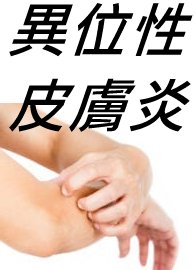| acupoint | Shuigou |
| alias | Renzhong |
Intersecting point: governor vessel and foot yangming.
bubble_chart Etymology
"Shui" (水), water; "gou" (溝), ditch or trough. The depression below nose resembles a water trough, and the acupoint is located within it, hence the name. The water trough resembles a human figure. According to Shiming-Shi Xingti (Explanation of Names: Explanation of the Body), "The area below nose is called standing person, as it stands on the nose, narrow and long like a standing person." The acupoint is located here, so it is also called "Renzhong" (人中, middle of person). Alternatively, "ren" refers to human part, situated between heaven (upper) and earth (lower) regions. Nose governs heavenly qi (breathing), and mouth governs earthly qi (eating and drinking). The acupoint is located in the human part between nose and mouth. Laozi Shilue (Brief Explanation of Laozi) states: "Nose is the gate of heaven, mouth is the gate of earth, and Renzhong is between heaven and earth."
_en.webp)
(adapted from "Meridians and Acupoints")
- Zhenjiu Jiayi Jing: "Below nasal bridge, in philtrum";
- Zhenjiu Yulong Jing: "0.3 cun below nose, at the raised area when holding water in mouth";
- Zhenjiu Juying: "In the depression near nostrils."
- Muscle: orbicularis oris.
- Nerves: buccal branch of facial nerve, branches of infraorbital nerve.
- Vessels: superior labial artery and vein.
Insert perpendicularly or obliquely upward 0.5~1 cun. Moxibustion is contraindicated.
Open orifices, revive spirit, raise yang, reduce swelling, fortify waist and spine.
- Classical: sudden death, corpse-like syncope, unconsciousness, stroke with block syndrome, locked jaw, infantile convulsion, manic and depressive psychosis, epilepsy, inappropriate laughter or crying, chills and fever, heart and abdominal colic, jaundice, edema, consumptive thirst, crookedness, facial swelling and puffiness, facial itching as if insects are crawling, lip twitching, wind-induced itchy, red, and painful eyes, nasal congestion, epistaxis, loss of smell, nasal sores, bad breath, headache, stiffness and pain in back, sprained lower back.
- Modern: fainting, shock, hiccups, enuresis, urinary retention, tetanus, facial palsy, hysteria, schizophrenia, chorea, convulsions, facial muscle spasms, motion sickness, acute lumbar sprain.
- Infantile convulsion: Yintang (EX-HN3), Shuigou (GV26).
- Postpartum fainting: Shuigou (GV26), Neiguan (PC6).
- Hysteria: Shuigou (GV26), Hegu (LI4) and Laogong (PC8).
- Facial swelling and puffiness: Shuigou (GV26), Qianding (GV21).
- Epistaxis: Shuigou (GV26), Shuifen (CV9), Yinjiao (CV7).
- Stiffness and pain in back, sprained lower back: Shuigou (GV26), Weizhong (BL40).
Renzhong, originally the name of the part, was used as the name of the acupoint by Tongren acupoint, acupuncture and moxibustion.
bubble_chart Other Related Items






